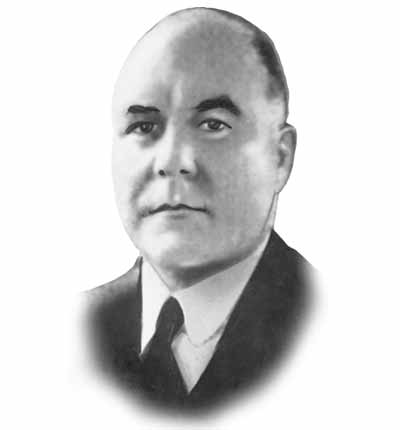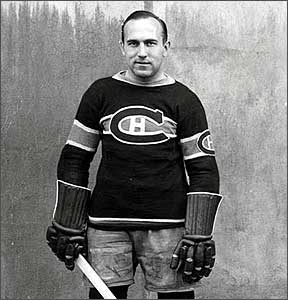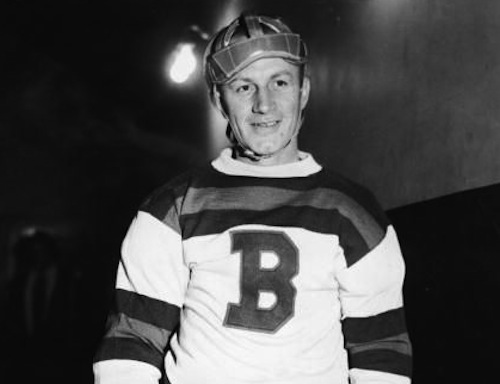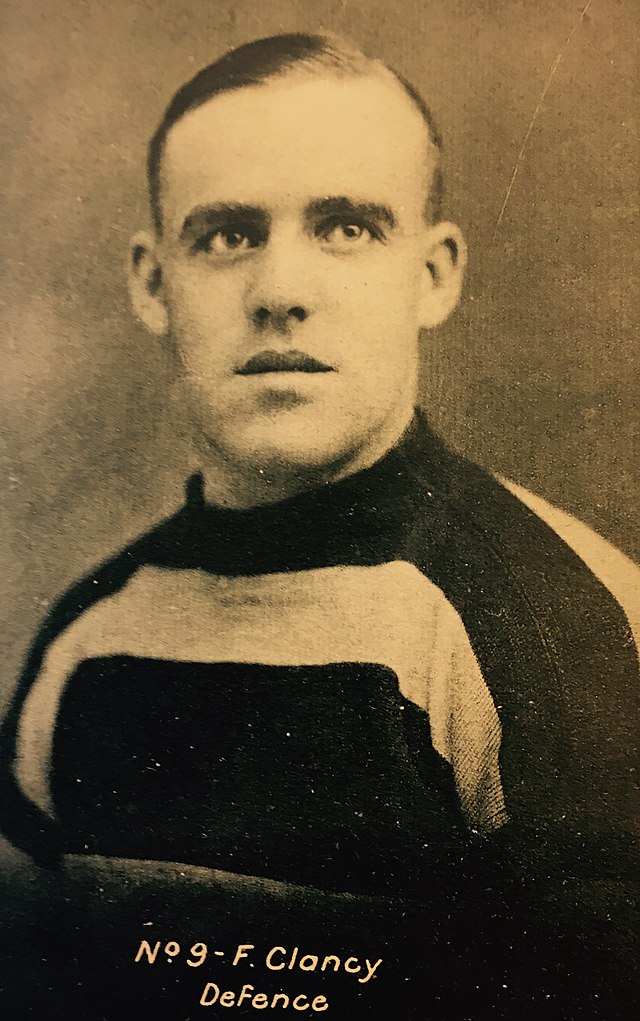The Great Depression of the 1930s cast a long shadow over North America, impacting every facet of life, including professional sports. As the economic landscape crumbled and people struggled to make ends meet, the NHL faced a tumultuous decade marked by economic depression and political unrest and presented with its own set of challenges. Yet, amidst the bleakness, it displayed remarkable resilience, adapting to the tumultuous times and continuing to provide a source of entertainment and hope for fans across the continent.
Here we will delve into the extraordinary story of the NHL during the Depression years, exploring how the influence of the legendary James Norris helped the league to weather the storm, the emergence of iconic players like Howie Morenz, Eddie Shore and “King” Clancy, the innovative changes that shaped the NHL in the Dirty 30s and the enduring legacy of this period in hockey history.
James Norris’ Impact
James Norris, a prominent figure in the NHL during the 1930s, left an indelible mark on the league’s development and success. As the owner of the Detroit Red Wings and an influential executive, Norris played a pivotal role in shaping the NHL’s landscape during a decade marked by economic hardship and social upheaval. In spite of a perceived conflict of interest, he held a significant financial interest in the New York Rangers, Boston Bruins, and Chicago Blackhawks as well as his own Red Wings, highlighting his contributions to the survival of the league.

Norris’ impact extended beyond the business aspect of the league. He was a visionary when it came to recognizing the importance of fair player contracts and salaries. He was at the forefront of negotiating better deals for players, ensuring their financial stability and well-being. His efforts helped raise the standard of living for NHL players during a time when financial security was hard for many.
Norris was fearless in challenging the status quo and pushing for innovative changes within the NHL. He advocated for the introduction of new technologies, such as artificial ice surfaces, which improved the quality and consistency of gameplay. Additionally, he was an early proponent of broadcasting NHL games on the radio, recognizing the potential to reach a wider audience and promote the sport.
Related: James Norris Memorial Trophy Winners
Norris’ legacy extends far beyond the 1930s. His commitment to the NHL’s growth and success set a precedent for future owners and executives. The Norris Trophy, awarded annually to the NHL’s top defenseman, stands as a testament to his influence on the game. His dedication to the sport, combined with his business acumen and progressive thinking, helped shape the NHL into the global phenomenon it is today.
Emergence of Legendary Players
Howie Morenz
Howie Morenz’s electrifying speed, exceptional skill, and relentless drive made him one of his era’s most influential and beloved players. His ascent to stardom began in the 1920s when he joined the Montreal Canadiens, one of the NHL’s most storied franchises. Known for his blazing speed and exceptional stickhandling, he quickly became a fan favourite. His style of play revolutionized the game, captivating audiences with his agility and offensive prowess.

Morenz was the embodiment of an offensive powerhouse. His scoring ability and playmaking skills enabled him to dominate the league. He won the Hart Trophy as the NHL’s most valuable player three times, in 1928, 1931, and 1932 and led the league in scoring twice, in 1928 and 1931. His ability to combine speed, finesse, and hockey intelligence made him virtually unstoppable on the ice.
He led the Canadiens to three Stanley Cups in 1924, 1930, and 1931, becoming a symbol of success and excellence in Montreal. His contributions on and off the ice helped solidify their status as one of the most successful and revered franchises in NHL history.
Sadly, Morenz’s career was cut short by tragedy. On March 8, 1937, he suffered a severe leg injury during a game that ultimately led to his untimely death at the age of 34. His tragic passing deeply affected the hockey world and fans across North America. His legacy as an iconic figure in the NHL endures to this day. He is remembered as one of the game’s pioneers, whose impact reached far beyond his time on the ice.
Eddie Shore
Eddie Shore is synonymous with toughness, determination, and unmatched skill. Playing for the Bruins during the 1930s, he is considered one of the greatest defensemen in NHL history. Recognized for his relentless and unwavering commitment to the game, his legend transcends generations. His playing style was defined by an unmatched level of intensity and fearlessness. He was unyielding in his pursuit of victory, pushing himself and his teammates to their limits. His physicality, coupled with his exceptional skills, made him a formidable force on the ice. He was known for his powerful body checks, willingness to sacrifice his body, and ability to dominate the game in all aspects.
Shore’s impact extended beyond his defensive prowess. He possessed rare offensive skills, regularly leading defensemen in scoring during his era. He won the Hart Trophy four times during the 1930s, a remarkable achievement for a defenseman at that time. His ability to contribute offensively while remaining a stalwart defender made him a true two-way player and a nightmare for opponents.
Shore’s competitive nature often sparked rivalries and feuds that have become the stuff of hockey lore. His clashes with other notable players are legendary tales that continue to captivate fans. His fierce battles on the ice showcased his determination and cemented his reputation as a player who never backed down from a challenge.

Off the ice, Shore’s dedication to the game was evident through his relentless training regimen and commitment to perfection. He demanded the same level of dedication from his teammates, setting high standards for himself and those around him. His work ethic and dedication to his craft set a benchmark for future generations of players, inspiring them to push beyond their limits.
Shore’s impact on the NHL continues to resonate to this day. His intensity and competitive spirit set a standard for what it means to be a true competitor. His legacy extends beyond his playing career, as he went on to own the Springfield Indians of the American Hockey League (AHL), contributing to the development of future NHL stars.
“King” Clancy
Francis Michael “King” Clancy, a name etched in the annals of hockey history, is regarded as one of the most beloved figures in the NHL. Esteemed for his charismatic personality, exceptional skills, and unwavering determination, “King” Clancy was a multi-talented player. He possessed exceptional speed, agility, and offensive prowess and was a dynamic force to be reckoned with. His versatility allowed him to seamlessly transition between playing as a defenseman and a forward, showcasing his adaptability and contributing to his team’s success.
Clancy’s captivating personality endeared him to fans and teammates alike. With his infectious smile, jovial nature, and unwavering spirit, he had a unique ability to uplift those around him. He was renowned for his exceptional leadership qualities, sportsmanship, fairness, integrity, and respect for the game. His positive attitude and ability to inspire his teammates earned him the respect of his peers throughout the hockey world. His charisma extended beyond the rink, making him a fan favourite and a beloved ambassador for the sport of hockey.

Clancy enjoyed tremendous success throughout his career. He won the Stanley Cup three times, with the Ottawa Senators in 1923 and 1927 and then with the Toronto Maple Leafs in 1932. His impact on the game extended into his post-playing years. He served as a coach, an executive, and an ambassador for the sport, leaving an indelible mark on the NHL. Clancy’s dedication to the game, infectious enthusiasm, and ability to connect with fans left a lasting legacy that continues to inspire generations of players and fans. His contributions on and off the ice were recognized when he was inducted into the Hockey Hall of Fame in 1958.
NHL Expansions and Failures during the Depression Years
The Dirty 30s also saw NHL expansions and failures as the league struggled to overcome financial difficulties and grow its fan base. The NHL sought to introduce a fresh wave of rivalries and increase the league’s popularity. This expansion into new markets hoped to provide variety and stability during a time of widespread uncertainty, and further solidify the NHL’s position as a major professional sports league.
The Philadelphia Quakers were granted an expansion franchise in 1930 but struggled both on and off the ice. They had financial difficulties and finished last in the league in their inaugural season and folded after just one year of existence. The Ottawa Senators, one of the NHL’s charter members, relocated to St. Louis as the St. Louis Eagles in 1934 due to financial problems. The team struggled to attract fans and finished last in the league in their only season. Similar to the Quakers, they folded after just one year.
The Montreal Maroons, despite being one of the NHL’s original teams in 1917, were forced to suspend operations after an arena fire in the NHL’s inaugural season. They finally resumed play in 1924, but then the Maroons faced financial difficulties during the Great Depression. They struggled to compete against the more successful Canadiens and eventually suspended operations in 1938. Efforts to revive the team were unsuccessful, and the franchise folded.
Related: Remembering the Montreal Maroons
The Brooklyn Americans were another expansion team in the 1920s and played their home games in New York City. While they had some success in their early years, they faced financial challenges during the Depression and struggled to compete with the more popular Rangers. The team suspended operations in 1942 and never returned to the NHL.
Innovative Changes and Rule Adjustments
During the 1930s, the NHL implemented several on-ice rule changes to improve the game and address various aspects of gameplay. Previously prohibited, in the 1930-31 season the NHL introduced the forward pass allowing players to pass the puck forward to their teammates. It opened up new possibilities for offensive strategies and increased the speed and flow of the game.
The penalty shot was introduced in the 1934-35 season. This allowed a player who was in a clear scoring opportunity and fouled by an opponent, to take a clear shot against the opposing goaltender. It provided an exciting one-on-one situation and offered a fair chance for the fouled player to score without facing any defenders except the goalie.
In 1936, the NHL established a goal crease in front of each net to provide goaltenders with a designated area of protection. This rule aimed to reduce goaltender interference and safeguard their ability to defend the net effectively. Players were prohibited from entering the crease, and any goal scored with an attacking player inside it was disallowed.
The “Sudden Death” overtime format was introduced in 1936, adding drama and tension to playoff games and elevating the reputation of the NHL as a thrilling and unpredictable league.
Related: Stanley Cup Champions 1930 – 1939
The NHL’s journey through the Dirty 30s exemplified resilience, determination, and adaptation. Despite the challenges posed by the Great Depression, the emergence of legendary players, the expansion of the league, and the implementation of innovative changes propelled the NHL forward. The league’s ability to survive and thrive during this tumultuous period set the stage for future success and solidified its position as one of the most beloved sports leagues in North America.
